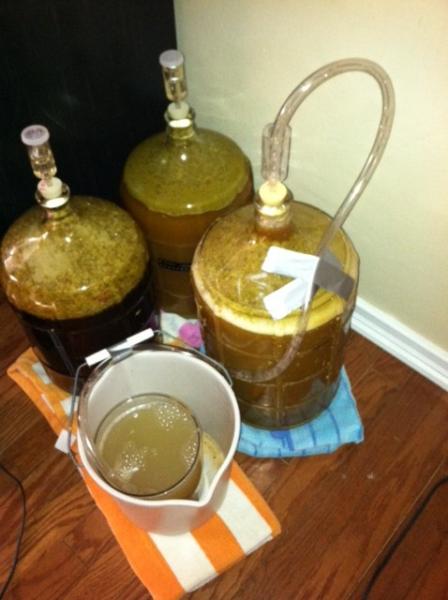I've read the Hazy beer threads, and still not clear (pardon the pun).
I've brewed 5 batches (extract). The enclosed pic shows 3, 4, and 5.
3 was a hoppy red (amber DME and weyermann's red malt)
4 was brewed immediately after, is a Nelson clone, with Rye malt, Nelson and Southern cross hops. Approach was similar, including 90 min boil, 1 Whirfloc tab at 10 min remaining, immersion chiller and ice bath (about 15-20 min to get it down from 210F to 76F), then transfered to 6 gal carboy and yeast pitched.
Red is crystal clear (batch #3), whereas Nelson clone is Hazy (#4).
My holiday IPA (#5 with blow hose attached) is also hazy.
Currently fermenting in 70-72F.
Not understanding what could be causing this?
Thanks - Marc

I've brewed 5 batches (extract). The enclosed pic shows 3, 4, and 5.
3 was a hoppy red (amber DME and weyermann's red malt)
4 was brewed immediately after, is a Nelson clone, with Rye malt, Nelson and Southern cross hops. Approach was similar, including 90 min boil, 1 Whirfloc tab at 10 min remaining, immersion chiller and ice bath (about 15-20 min to get it down from 210F to 76F), then transfered to 6 gal carboy and yeast pitched.
Red is crystal clear (batch #3), whereas Nelson clone is Hazy (#4).
My holiday IPA (#5 with blow hose attached) is also hazy.
Currently fermenting in 70-72F.
Not understanding what could be causing this?
Thanks - Marc













![Craft A Brew - Safale BE-256 Yeast - Fermentis - Belgian Ale Dry Yeast - For Belgian & Strong Ales - Ingredients for Home Brewing - Beer Making Supplies - [3 Pack]](https://m.media-amazon.com/images/I/51bcKEwQmWL._SL500_.jpg)












































